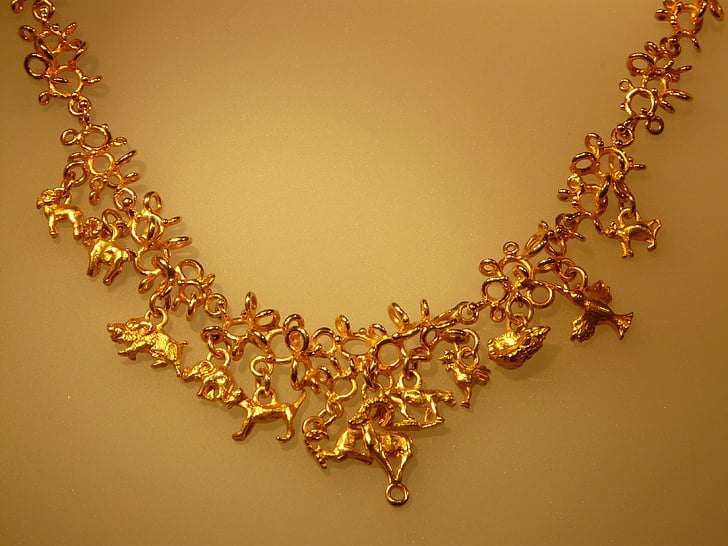
In the realms of global trade and commerce the price of gold is one of the most volatile things. The price of gold is influenced by various factors, and India, being one of the largest consumers globally, witnesses a significant surge in gold purchases, particularly during festivals and the wedding season. Let’s delve into the elements, in addition to demand, that play a role in shaping the gold market.
Gold holds a significant place in the fabric of Indian life. Here it’s a part of life. It isn’t just a precious metal; it’s intricately woven into the cultural tapestry, serving as a symbol of wealth, status, and a store of value. Beyond its symbolic importance, gold plays a practical role in rural communities, where its portability and security make it a favored form of investment. The World Gold Council (WGC) notes that gifting gold is deeply embedded in Indian marriage rituals, with weddings driving about half of the annual gold demand in the country.
Gold is an Evergreen Yellow Metal

Whether the domestic or global economy is flourishing or experiencing a recession, gold’s universal appeal stays intact. Gold serves as a shield against market volatility and uncertainty for numerous investors. It is embraced as a hedge, with individuals turning to it as a safe haven during times of unpredictability. The inclination towards tangible assets leads Indian households to perceive gold as a reliable option, an asset to acquire when other investments face depreciation.
Gold and Inflation Connection:
Gold functions as a safeguard against inflation, dynamically responding to shifts in inflation rates. Traditionally, the worth of gold ascends in tandem with the surge in living expenses. As inflation gains momentum, the purchasing power of currency diminishes, prompting individuals to seek refuge by converting their wealth into the enduring allure of gold.
Gold and Interest Rates Connection:
In the financial world, experts often note a typical inverse connection between gold and interest rates in regular situations. An increase in yield usually signals expectations of a robust economy. With a strong economy comes the likelihood of inflation, and gold becomes a popular choice as a safeguard against inflation. Additionally, when interest rates climb, investors tend to favor fixed income investments.
Gold and Monsoon Connection :
Gold consumption in India is heavily influenced by rural areas, constituting 60% of the total. The demand for gold in these regions is intricately tied to the monsoon patterns. The connection is straightforward – a bountiful crop season empowers farmers to invest in gold, thereby creating assets. Conversely, during a deficient monsoon, farmers may opt to sell their gold holdings to generate much-needed funds.
Impact of Rupee-Dollar Equation on Gold Price

While global gold prices remain unaffected, the exchange rate between the rupee and the dollar influences gold rates in India. Since gold is mostly imported, a weaker rupee against the dollar tends to make gold more expensive in rupee terms. This could potentially lower the demand for gold locally. It’s important to note that fluctuations in the rupee-dollar rates don’t alter gold prices denominated in dollars.
Weakening Dollar:
Normally, gold and the dollar tend to move in opposite directions. When the dollar weakens, gold prices usually go up because international gold is priced in dollars. A weaker dollar makes other currencies stronger, boosting demand for commodities like gold and driving up prices. Additionally, when the US dollar loses value, investors often seek alternative places to store their money, and gold is a popular choice for them.
Correlation With Other Asset Classes:
Some economists argue that gold serves as a potent portfolio diversifier, given its tendency to exhibit low to negative correlations with major asset classes. Generally, it lacks a statistically significant correlation with mainstream assets. Nevertheless, there’s a notion that during times of equity market strain, a peculiar inverse correlation may emerge between gold and equities.
Impact of Geopolitical Factors on Gold Price:
Geopolitical upheavals often bode well for gold. In times of crises, like wars that typically exert a negative influence on various asset prices, gold tends to shine. The demand for gold rises as it becomes a sought-after safe haven in such turbulent times.
Gold Price and Stock Market Connection:
 When gold prices rise, the stock market tends to do less well. Is there a connection between gold prices and the stock market? Yes, there is, and it’s a negative one. People often call gold a “safe haven” for investors. But what do we mean by “safe”? It means that gold acts as a safety net for investors when the stock market gets unpredictable and shaky.
When gold prices rise, the stock market tends to do less well. Is there a connection between gold prices and the stock market? Yes, there is, and it’s a negative one. People often call gold a “safe haven” for investors. But what do we mean by “safe”? It means that gold acts as a safety net for investors when the stock market gets unpredictable and shaky.
We can’t directly say gold and the stock market are linked, but looking at their past performances helps. In simple terms, gold and stocks usually move in opposite directions. When gold prices rise, stock prices often fall, and the other way around.
In the past, when the stock market was at its gloomiest, gold tended to shine. This relationship between gold prices and the stock market holds true globally. People tend to buy a lot of gold coins, bars, and ETFs when the stock market isn’t doing well.
Gold Price and GDP connection:
There’s an indirect connection between gold trade and a country’s GDP. Take India, for example, where the demand for gold is huge. To meet this demand, India imports significant amounts of gold from countries such as Switzerland, UAE, and South Africa.
GDP numbers can be influenced by gold trade due to a few key factors. In India, where a substantial amount of gold is imported from major suppliers, the money spent by customers on buying gold goes directly to the exporting countries, affecting the balance of money flow and trade.
Sending money directly to foreign countries puts pressure on the Indian rupee’s value globally. When a lot of gold is imported, it widens the country’s trade deficit, impacting the overall GDP. To tackle this, there have been efforts in recent years to discourage gold trade by raising import duties. This has led to a noticeable decrease in gold trade, but the demand for gold among Indians remains strong.
Gold Price is Economic Barometer:
Keeping so many factors in mind, it can be said that Price of Gold is a reliable barometer of prevailing economic scenario, reflecting its intrinsic connection to cultural, economic, and global dynamics.

सुवर्ण का सुंदर आर्थिक वर्णन।
सादर प्रणाम